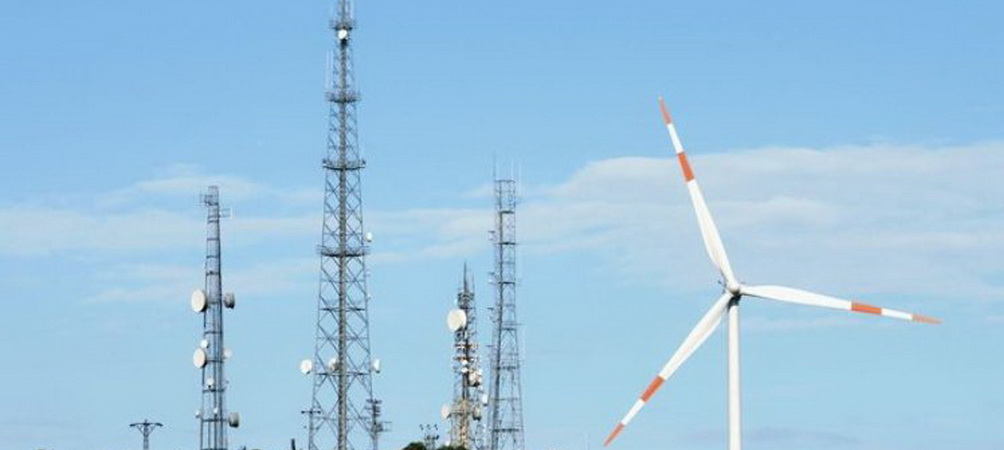
The case for committing to greener telecom networks
Energy costs for telecom operators around the world are already high: at the end of 2018, they accounted, on average, for around 5 percent of operating expenditures. In emerging markets, where low grid coverage often means operators must supply their own power with a generator set, energy can account for as much as 7 percent of expenditures. And costs look set to rise further, putting greater pressure on margins at a time when the industry can scarcely handle any additional financial burden.
This growing energy challenge is, in large measure, a result of the exponential growth in traffic that new 5G services are likely to deliver. Although the 5G-new-radio standard is more energy efficient per gigabyte than are the 4G standards, the proposed 5G use cases and new spectrum bands will require many more mobile sites, outstripping potential energy efficiencies. Each 5G site will need two to three times more power than the 4G-equivalent site, according to industry estimates. At the same time, as more services are provided at the edge, the number of data centres will need to rise. By our calculations, these already account for 5 to 10 percent of a telecom operator’s energy costs.
Supply-side costs are also likely to increase. On average, global power prices have risen by about 1 percent a year over the past decade, although in Australia, Canada, Egypt, France, and South Africa, they have climbed by between 3 and 7 percent. There is no reason to believe this trend will abate, particularly given the likely shift to electric vehicles in many markets and the extra demand for grid power that this will unleash.
Costs are not the only concern, however. Telecom operators already account for 2 to 3 percent of total global energy demand, often making them some of the most energy-intensive companies in their geographic markets. As operators’ energy consumption expands, so will their carbon footprint, hurting not just the environment but also their reputation and standing, particularly among the expanding class of socially responsible investors.
But this does not have to be the case. All operators have considerable scope to cut energy costs and consumption. In current mobile networks, for example, transferring data only consumes around 15 percent of energy. Some 85 percent is wasted because of heat loss in power amplifiers, equipment kept idling when there is no data transmission, and inefficiency in systems such as rectifiers, cooling systems, and battery units.
Some savings lie in deploying artificial intelligence (AI) and the Internet of Things (IoT): some in structural and architectural transformations, and some in cheaper and more sustainable energy sourcing. The extent of the potential savings will vary by operator and market. Regulations governing distribution and retailing, green-energy incentives, OEM choice, and an operator’s starting point in energy efficiency will all make a difference. Nevertheless, our work suggests that many operators can reduce energy costs by at least 15 to 20 percent in the space of just one year and more over a longer period.
Where the opportunities lie
The biggest opportunities for energy-consumption and cost reductions lie in four areas. Some are more complex than others to capture, and some require more capital spending than others.
Artificial-intelligence-driven sleep and shutdown
Running systems that are not in constant use consumes significant amounts of energy. Typically, radio access network (RAN) accounts for about 60 percent of the power used at a mobile site. Data-traffic loads are intermittent, though, so that different parts of RAN can be put briefly into sleep mode, even during periods of peak traffic. A mobile operator in Australia found that simply turning off the power-amplifier symbol at a site could cut consumption by more than 7 percent, without any service degradation.
AI expands the potential for such energy-saving opportunities across the network. The ability to analyze vast amounts of data relating to traffic patterns, real-time demand, and network-resource availability allows for quick, automated decisions on the parts of the system that can be put into sleep mode or shut down. For example, this could involve shutting down frequency carriers or shutting down a site momentarily in areas where there is overlapping coverage. We estimate that such energy-conserving AI tools can deliver 5 to 7 percent savings for some operators, in addition to savings that accrue from stand-alone, site-level efficiency measures. And the potential will surely rise further. As open and cloud-native approaches to building RAN gain ground, additional AI solutions that not only save energy but also minimize related customer-experience issues, such as latency, are emerging. They can also be used on all networks, from 2G to 5G.
Similar energy-saving advances are occurring with AI on fixed networks. For example, AI can reduce the energy cost of central offices by between 3 and 5 percent by continuously calibrating the optimal settings of chillers, pumps, and fans to guard against waste.
The AI tools for managing energy efficiency in data centres (where the cloud RAN will be located) are considerably more mature. Google, for example, has reported 30 percent energy savings using AI at its data centres, illustrating just how high telecom operators could set their sights.
There is a huge gap between most operators’ high levels of energy consumption and costs and the lower levels that are technically possible, even today. Companies that fail to take advantage of new tools being developed to cut consumption and of cheaper, sustainable energy sources will see that gap widen further as traffic grows, causing potentially lasting damage to their competitive positions. They can no longer afford to shy away from setting audacious goals that will benefit not just the company and the industry but also the environment and world at large.
Source: McKinsey